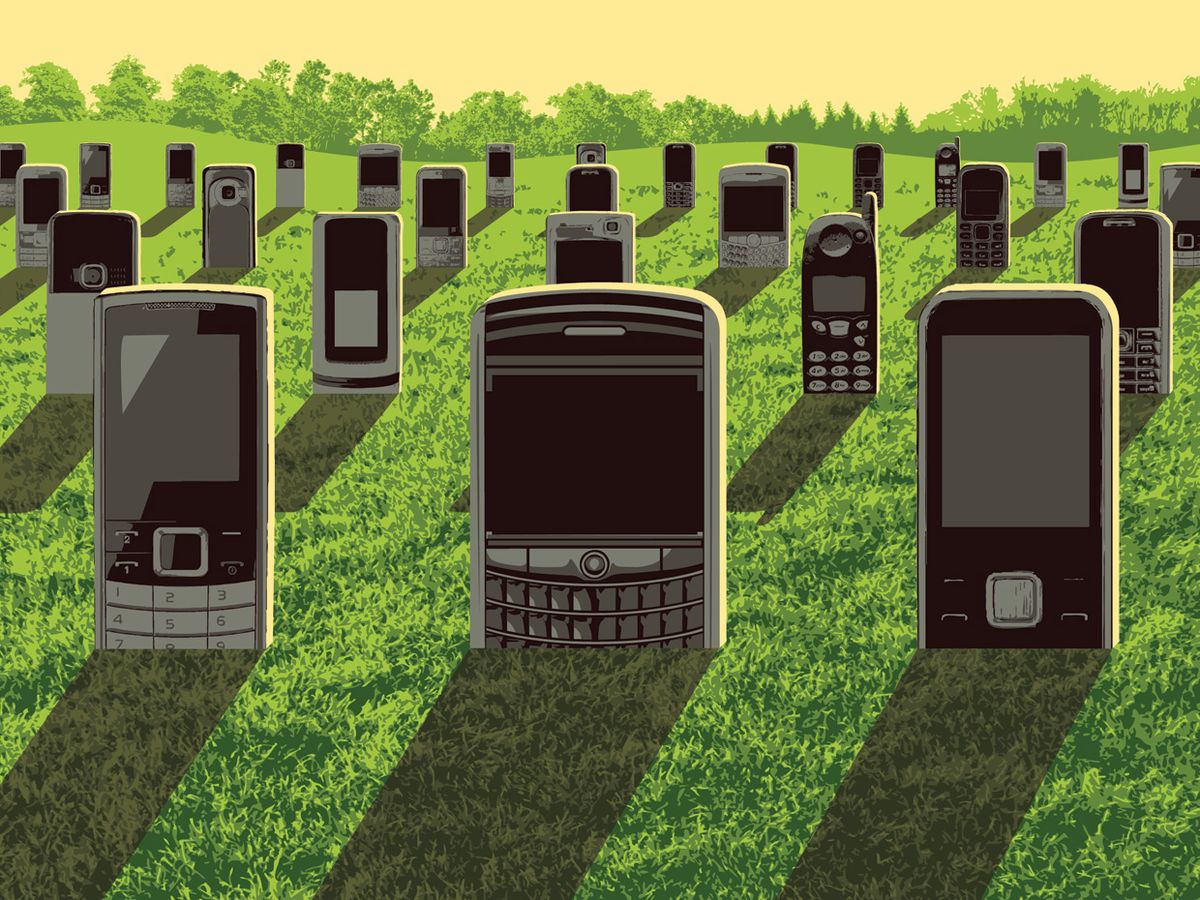In the back of my closet is a padded leather case containing my precious 35-mm film camera and lenses. I thought the investment in these things would last me forever. Now, however, that leather case is cracking, and the camera goes unused. Meanwhile, in a desk drawer lies a careless jumble of digital cameras, including the most recently purchased one. I feel no special affinity for them—they just come and go, and rather quickly at that.
Cellphones are just as bad. I understand that about a half million are thrown away every day in the United States alone. This means that the average life span is about two years, which puts dog years to shame. In human terms, the cellphone loses about a month of its life every day.
This all suggests a new perspective—for both users and designers—about electronics as disposable systems. As a consumer, I’ve had a hard time getting it right.
When a new gadget is announced, I feel an irresistible pull. It’s an emotional thing, because I know that this will be version 1.0, full of bugs and ripe for improvement. No sooner do I buy this first model than a second-generation model hits the market. Then I face a choice: Stick with the old clunky one or put the same investment into the new one? Millions of people have experienced this dilemma, with the iPad, already in its third generation, as a leading example. When do you buy a new one? I remember worrying about how much memory I should get and whether I should purchase a protective film for the screen. But then I thought: Why bother? I won’t have this thing very long.
How does this new calculus of consumption affect design? The approach would seem to be the polar opposite of that taken for military equipment, which focuses on durability, robustness, and longevity. The design cycle there takes years and ends with relatively small production quantities and high prices. Meanwhile, the commercial equivalents will have gone through multiple generations of large production runs and ever-lower prices.
I suspect that engineers don’t really worry much about the philosophy and just try to do the best job they can. The question of timing must be foremost. You can’t miss a generation in the market or your supernova company will turn into a dwarf star. We’ve seen it happen. So there’s no time to tweak the design, and at some early point you have to stop seeking improvements or looking for bugs and just go with what you have. That’s difficult for an engineer. Perhaps there is some analogy to the fruit market, where they ship green bananas and suggest a sell-by date. The big difference is that the electronics don’t ripen on the way to the store. Quite the opposite.
What about the supposition that nobody is going to upgrade this thing? Maybe it’s okay to glue the battery in, and perhaps a USB port would be an unnecessary expense. But there is a fine line past which it starts to look like the designer is going out of his way to ensure that we buy the next version instead of upgrading. When the memory is soldered in and special tools are required to remove the back, we can be forgiven our suspicions.
The chaos of time pressure comes in the context of dealing with a tremendously complex system. I think only an engineer has any appreciation of the deep complexity of a cellphone, largely hidden in the fossilized chips that have evolved over the fast-moving generations. I can never quite get over the experience of opening the back of a cellphone and seeing that there is apparently nothing inside—just a big battery and display. I think of it as a true work of art, but its transience may make a consumer think of it in terms of what it will soon be—a piece of junk.
I got my present cellphone about a year ago. It’s already showing signs of senility, almost ready to join the digital-camera graveyard in the desk drawer.
